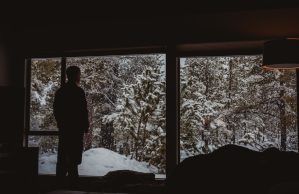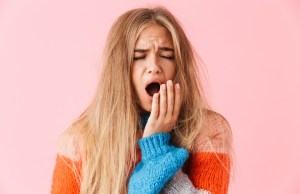Fall is fast approaching—the temperature is cooling down, boots and sweaters are being dug out of closets, and the anticipation of pumpkin spice lattes is flooding social media. People are clearly excited for the hot summer to come to an end and make way for the cooler nights and colorful, crunchy leaves characteristic of the autumn season. Except, not everybody is excited nor ready for summer to go: this includes beach bums, people who simply hate the cold and—most severely—those who suffer from a very real disorder called seasonal affective disorder (SAD).
Why Am I SAD When the Seasons Change?
Seasonal affective disorder is a depressive disorder that’s related to the changes in season. Typically, symptoms start in the fall and continue throughout winter, but they may also occur in the spring or the summer. The exact cause of SAD is unknown, but a couple of theories say that it is influenced by light. One says that decreased exposure to sunlight affects our natural biological clocks which regulate our sleep and mood. Another claims that light-dependent brain chemicals are impacted more in those with the condition.
While seasonal affective disorder may seem like a bizarre illness, it is real and affects many individuals around the world. When I was in high school, I befriended a boy named Jamie. He was funny, seemed nice enough, and was in all my classes. I really liked him at first, but he quickly became temperamental and wasn’t so pleasant to be around anymore. I figured he was just a moody guy, but then he started to show other notable, more concerning changes:
- He was fatigued all day in class.
- He had a difficult time concentrating.
- He expressed feeling unmotivated and hopeless.
- He was extremely irritable and would snap on anyone in an instant.
- He lost interest in his favorite activities, like playing basketball after school.
- He felt sleepy no matter how much sleep he got the night before.
- He became a generally unhappy guy.
As it turns out, these were all symptoms and tell-tale signs that he was suffering from seasonal affective disorder. He said that every time fall rolled around, he faced these major depressive episodes all through winter. And they didn’t recede until spring’s sunshine pushed the dreary days aside. But Jamie didn’t want to struggle this way for half of the year, every year. So, he went to the doctor and was prescribed antidepressants to help him deal with the crippling effects of SAD. While this proved to be the most effective treatment method for Jamie, other treatment options are available such as:
- Light therapy, which involves using a specialized light box or visor at least 30 minutes a day, but only under a physician’s supervision.
- Other forms of counseling and therapy, such as cognitive behavioral therapy or interpersonal therapy.
- Practicing healthy lifestyle habits, like exercising regularly and maintaining a healthy diet.
There’s a Cloud Over My Head
Aside from this depressive condition rooted in seasonal change, there are other ways we’re affected by our environment, or more specifically the weather. It’s no secret or surprise that when TV or movie characters have a bad day it’s usually raining outside. Or when they’re having the time of their lives it appears to be the perfect sunny day. We don’t really question it because we associate rain with negative emotions and sunshine with positive ones. However, weather doesn’t always elicit the feelings or behaviors we expect. The following are a few examples of how weather can affect our mood for the better and the worse:
1) Higher temperatures can cheer up a depressed individual. According to a study called “The Effects of Weather on Daily Mood: A Multilevel Approach”, the weather has a greater effect on one’s negative mood than one’s positive mood. So, higher temperatures can raise someone up who’s feeling down and factors like wind and lack of sun can make them feel even lower.
2) Rain and heat bring out our demons. Solomon M. Hsiang, lead author of the study “Quantifying the Influence of Climate on Human Conflict”, found that individuals were more aggressive in higher temperatures and when it rained more. While their research did not find or assert that weather caused more aggression, it showed that there is certainly a correlation between them.
3) There’s a surge in suicides in the spring and summer. This is probably harder to believe than the previous assertions, but it’s true. A meta-analysis study titled “Suicide and Seasonality” found there is an increase in suicides during the spring and summer months and a decrease in suicides during the fall and winter months among individuals in both the Northern and Southern hemispheres.













